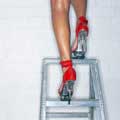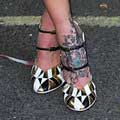What Trainers Should YOU Be Wearing For Your Workout
Not all trainers are created equal and different exercises require different trainers. Find your perfect pair with our handy guide...
Whether you’ve just got your head around actually participating in some form of sporting activity, or are a total fitness freak – getting the right kit is essential in order to maximise your workout potential and minimise potential bodily harm.
But how do you go about choosing the right footwear for you? Foot injuries are surprisingly common and the wrong sports shoes can lead to serious problems with the hips, knees, back and feet, not to mention shin splints, which can be pretty damn painful and put you out of action for weeks.
We turned to the the kit experts at Sportsshoes.com to offer their advice on the different types of sports shoes available and what to look for:
STEP 1: What pronation am I?
Pronation is the lower legs’ natural way of absorbing shock. It is the movement of the foot from heel strike to big toe. There are 3 levels of pronation:
1. Under pronators (also known as supinators or neutral runners) have a high, fixed arch, these people often run on their toes and require a cushioned shoe.
2. Over pronators usually have a flatter foot and require a control shoe.
3. Mild pronators have a position between the two extremes and require a stability shoe.
Find out what your pronation is HERE
STEP 2: Find your perfect shoe to match your sport…
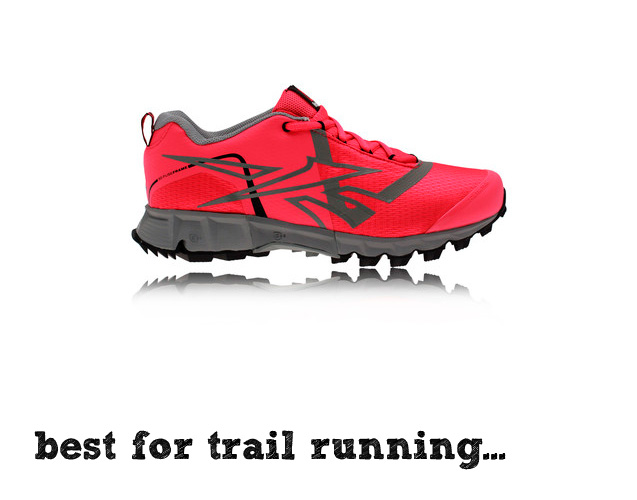
Leave the monotony of the road behind, hitting the trails is exhilarating and great for the mind and body. Trail running is also beneficial in that it reduces impact on the legs and feet. However, wet, slippery and uneven surfaces can present their own footwear challenges; key shoe features include protection plates, secure support and waterproof uppers.
WE RECOMMEND: Reebok One Seeker GoreTex VI
With a great balance of comfort and performance, these Reebok shoes have a premium cushioning technology and a Gore-Tex upper to keep your feet cool on long journeys to and a number of features that make them great for a variety of terrains.
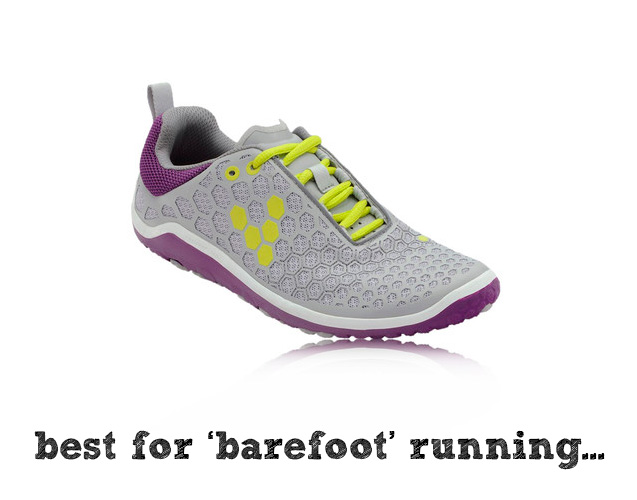
Research indicates that incorporating barefoot running into your training regime can have many benefits. However, switching to barefoot running should be done cautiously and your footwear should be chosen with care to avoid injury. Barefoot shoes are designed to enable the foot to move as naturally as possible without interference. The shoes range from the super minimal, comprising only a very minimal upper and sole, to transitional models which offer a compromise between a traditional running shoe and a barefoot style.
WE RECOMMEND: Vivobarefoot Evo Lite
The VivoBarefoot Evo Lite has been designed around VivoBarefoot's core principles; that the shoe should let your feet do its thing - which they call Pure Barefoot Technology. Ideal for a wide variety of activities, from short runs to court sports, this shoe allows you to experience a natural-style shoe with an ultra-thin 3mm sole. It will allow your feet perform as if they are barefoot.
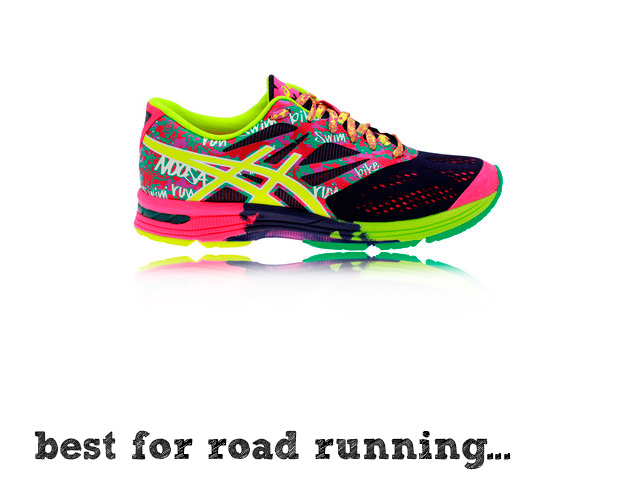
On and off road shoes require a tread with deep enough lugs for grip while being durable enough not to wear out. Road shoes have a shallow hard-wearing tread whereas off road shoes need deep lugs for maximum traction. Road shoes are more cushioned than off road shoes to give support on tarmac.
WE RECOMMEND: Asics Gel Noosa Tri 10s
Asics Noosa is now celebrating their 10th edition and the Gel-Noosa Tri 10s are ideal for road running. Designed for triathalons, they are optimised for quick ‘get on and get off’ transitions with elastic lacing. Their seamless and soft lining means that you can wear them comfortably without socks and the Wet Grip® technology on the outsole enhances traction on wet surfaces. The Tri 10s are perfect for commuting; allowing you to slip in and out of them easily and are also a solid but lightweight shoe for when you want to work out properly.
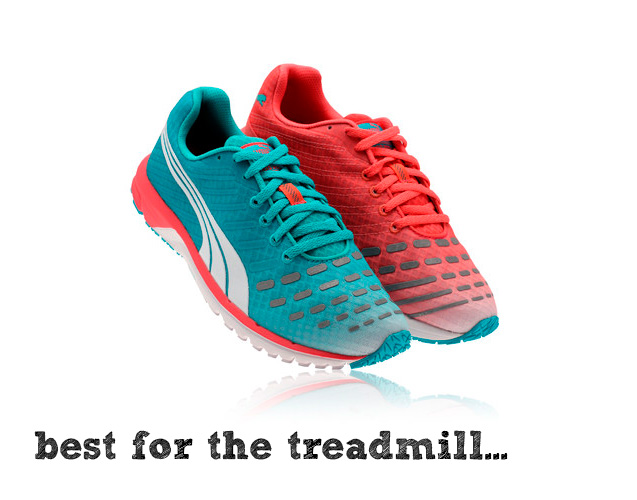
If you are going to mainly be using the treadmill at the gym you will want a lightweight, breathable mesh upper and an in-shoe ventilation system, good cushioning and lateral support for side to side movement. Durability won’t be as big an issue as the treadmill is smoother terrain! But make sure you go for a non-marking outsole.
WE RECOMMEND: Puma Faas 300v3s
The no-nonsense Puma Faas trainers boast a technical design that is perfect for those looking for a lightweight and functional trainer. The Faas 300v3 is the latest iteration of the 300 series. Built specifically for the female runner with a lightweight, technical platform and deconstructed upper, they deliver both on style and substance. The aesthetic design, with mismatched blue and pink shoes, is brilliant for making a bold statement with your exercise gear – Mel B is already a fan.
Post Your Comment
Join us Here
- You're Loving
- Just In
Instagram @CompanyMagazine
Join us Now!
- Receive the Free weekly newsletter
- Win 100’s of freebies


























